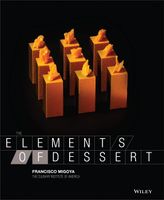Label
All
0
Clear all filters
🔥 Try our grilling cookbooks and save 25% on ckbk membership with code BBQ25 🔥
The Creaming Method
Appears in
Published 2012
Used for certain cakes (such as pound cake) and doughs (most cookies and tart doughs are made with this method), the creaming method is a mixing method in which softened fat (generally butter) and sugar are vigorously combined, either manually or mechanically, to incorporate air. This trapped air is partially responsible for the leavening of the product. The main ingredients used are sugar, fat, eggs, and flour. The sugar is granulated to assist in incorporating air into the mixture. Superfine sugar or bakers’ sugar yields better results than regular granulated; the sugar dissolves better and faster into the fat because the crystals are smaller. The fat should be between 21°C/70°F and 22°C/72°F. This temperature will allow it to take air in more readily than if it were cold. Oil should not be used since it does not have the capacity to trap air with this mixing method. Vegetable shortenings and animal fats such as lard and duck fat may be used, but the end result will vary. The eggs should be warmed over a hot water bath to between 26°C/80°F and 29°C/85°F. They are usually added slowly into the butter in order to create an emulsion, and their warm temperature makes the mixing process more efficient. If the eggs are colder, the butter will seize and the emulsion will break. If the eggs are warmer, they will soften the butter too much and any trapped air would escape, resulting in a flat product. Milk, water, or fruit juices may be added to the eggs, but the eggs cannot be completely replaced. The flour that is used should be a low-protein flour, such as pastry or cake flour, but sometimes an allpurpose flour is also used. Other dry ingredients may be combined with the flour for flavor and texture, such as ground nuts, dried fruit, or cocoa powder.
Part of
Advertisement
Related Recipes
-
-
-
-
Related Reference
-
-
-
-
Advertisement
The licensor does not allow printing of this title



